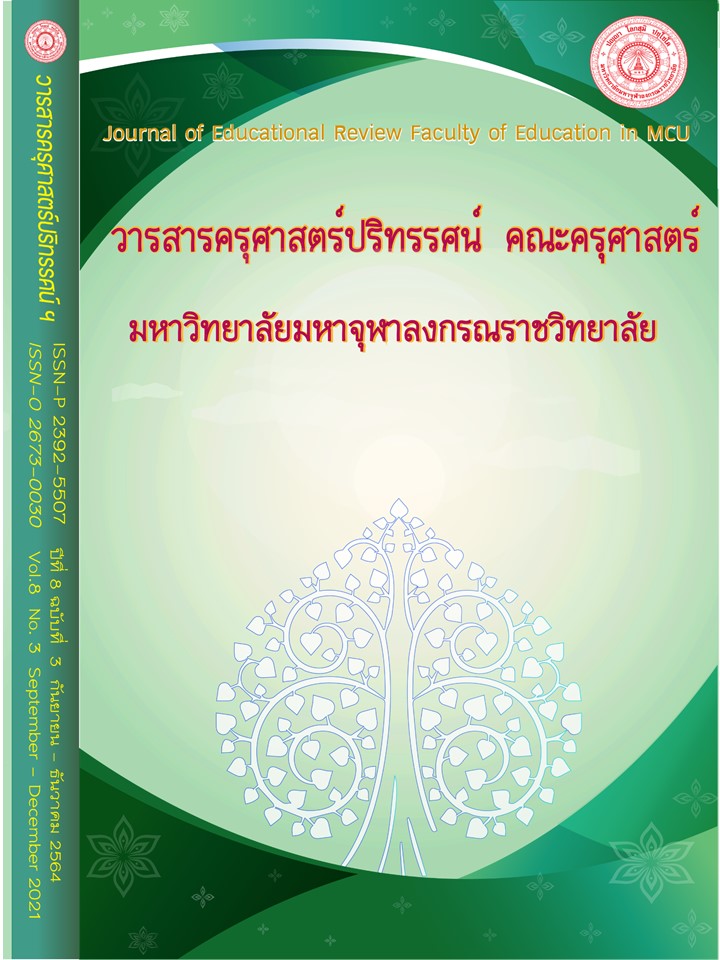THE COMPILATION OF THAI MEDICINAL PLANTS USING TISSUE CULTURE METHOD PROPAGATION
Main Article Content
Abstract
The objectives of this documentary research article were to investigate and to gather a list of Thai medicinal plants that could be propagated by tissue culture methods. The compilation was derived from Thai medicinal plants propagation using tissue culture method research. The focus was on Thai medicinal plants that could be propagated as seedlings and then analyzed for classification based on tissue culture method criteria. The results revealed that there were 226 species grown as seedlings ready for planting, with 3 technics of seedlings propagation as follows:1) 164 organ culture, 2) 52 callus culture, and 3) 14 embryo culture. Most of medicinal plants could be propagated by only 1 technic, however, 4 species could be propagated by 2 technics. This research has revealed the species of Thai medicinal plants that can be propagated by successful tissue culture methods. It can be fruitful in the teaching and learning process and can be used as a guideline for expanding the bond of high-quality Thai medicinal plants with large quantities and without mutations in order to support the cultivation of high quality medicinal plants.
Article Details
ทัศนะและความคิดเห็นที่ปรากฏในบทความในวารสารฉบับนี้ถือเป็นความรับผิดชอบของผู้เขียนบทความนั้นเพียงผู้เดียว และไม่ถือเป็นทัศนะและความรับผิดชอบของกองบรรณาธิการ
กองบรรณาธิการขอสงวนสิทธิ์ในการคัดเลือกบทความลงตีพิมพ์และจะแจ้งให้เจ้าของบทความทราบหลังจากผู้ประเมินบทความตรวจอ่านบทความแล้ว
ต้นฉบับที่ได้รับการตีพิมพ์ในวารสารครุศาสตร์ปริทรรศน์ คณะครุศาสตร์ มหาวิทยาลัยมหาจุฬาลงกรณราชวิทยาลัย ถือเป็นกรรมสิทธิ์ของคณะครุศาสตร์ มหาวิทยาลัยมหาจุฬาลงกรณราชวิทยาลัย ห้ามนำข้อความทั้งหมดหรือบางส่วนไปพิมพ์ซ้ำ เว้นเสียแต่ว่าจะได้รับอนุญาตจากมหาวิทยาลัยฯ เป็นลายลักษณ์อักษร
References
กรณ์ กรภัทร์ชัยกุล, ศักดิ์ชัย กรรมารางกูร และจีรนันท์ กล่อมนรา แก้วรักษา. (2560). การเกิดต้นจากการเพาะเลี้ยงแคลลัสของขมิ้นชันในหลอดทดลอง. วารสารวิทยาศาสตร์บูรพา. 22(1). 1-13.
กระทรวงสาธารณสุขและองค์กรภาครัฐและเอกชน. (2559). แผนแม่บทแห่งชาติว่าด้วยการพัฒนาสมุนไพรไทย ฉบับที่ 1 พ.ศ. 2560-2564. นนทบุรี: ทีเอสอินเตอร์พริ้นท์.
ชุลีพร บุตรโคตร. (16 พ.ค. 2557). เปิดเออีซี-อนาคต‘สมุนไพรไทย’น่าห่วง 'วัตถุดิบ'สู้อาเซียนไม่ได้-เจอ กม.บีบซ้ำ. แหล่งที่มา https://www.tcijthai.com/news/2014/16/scoop/4227 สืบค้นเมื่อ 20 ส.ค. 2563.
ประกาศคณะกรรมการพัฒนาระบบยาแห่งชาติ เรื่อง บัญชียาหลักแห่งชาติ พ.ศ. 2562. (2562). ราชกิจจานุเบกษา เล่มที่ 137 ง หน้า 270-330. (25 ส.ค. 2563).
พระราชบัญญัติวิชาชีพการแพทย์แผนไทย พ.ศ. 2556. (2556). ราชกิจจานุเบกษา เล่มที่ 130 ตอนที่ 10 ก หน้า 2 (1 ก.พ. 2556).
วราภรณ์ ภูตะลุน. (2557). เทคโนโลยีเพาะเลี้ยงเนื้อเยื่อพืชสมุนไพร: จากพื้นฐานสู่การประยุกต์ใช้ทางเภสัชศาสตร์. ขอนแก่น: ขอนแก่นพิมพ์พัฒนา.
วิทยาลัยการแพทย์พื้นบ้านและการแพทย์ทางเลือก มหาวิทยาลัยราชภัฏเชียงราย. (2557). คู่มือเภสัชศาสตร์ไทยและเภสัชกรรมไทย. เชียงใหม่: วนิดาการพิมพ์.
สุพินญา คำขจร, สุรียา ตันติวิวัฒน์, ประศาสตร์ เกื้อมณี และคนอื่นๆ. (2540). การขยายพันธุ์มะตูมด้วยวิธีการเพาะเลี้ยงเนื้อเยื่อ. การประชุมทางวิชาการของมหาวิทยาลัยเกษตรศาสตร์ ครั้งที่ 35: สาขาพืช ส่งเสริมและนิเทศศาสตร์เกษตร อุตสาหกรรมเกษตร. 351-358.
หนังสือพิมพ์ฐานเศรษฐกิจ. (1-4 พ.ค. 2559). สภาอุตสาหกรรมสินค้าอาหารแก้เหตุขาดวัตถุดิบ เร่งปลูกพืชสมุนไพรลดนำเข้าปีละแสนล้านบาท. หนังสือพิมพ์ฐานเศรษฐกิจ. แหล่งที่มา https://www.thansettakij.com/content/business/49030 สืบค้นเมื่อ 20 ส.ค. 2563.
สำนักงานปลัดกระทรวงสาธารณสุข กองการประกอบโรคศิลปะ. (2541). ตำราแพทย์แผนโบราณทั่วไป สาขาเภสัชกรรม. กรุงเทพมหานคร: โรงพิมพ์ชุมนุมสหกรณ์แห่งประเทศไทย.
Thengane, S. R., Bhosle, S. V., Deodhar, S. R., et al. (2006). Micropropagation of Indian laurel (Calophyllum inophyllum) a source of anti-HIV compounds. Current Science. 90(10). 1393-1397.


